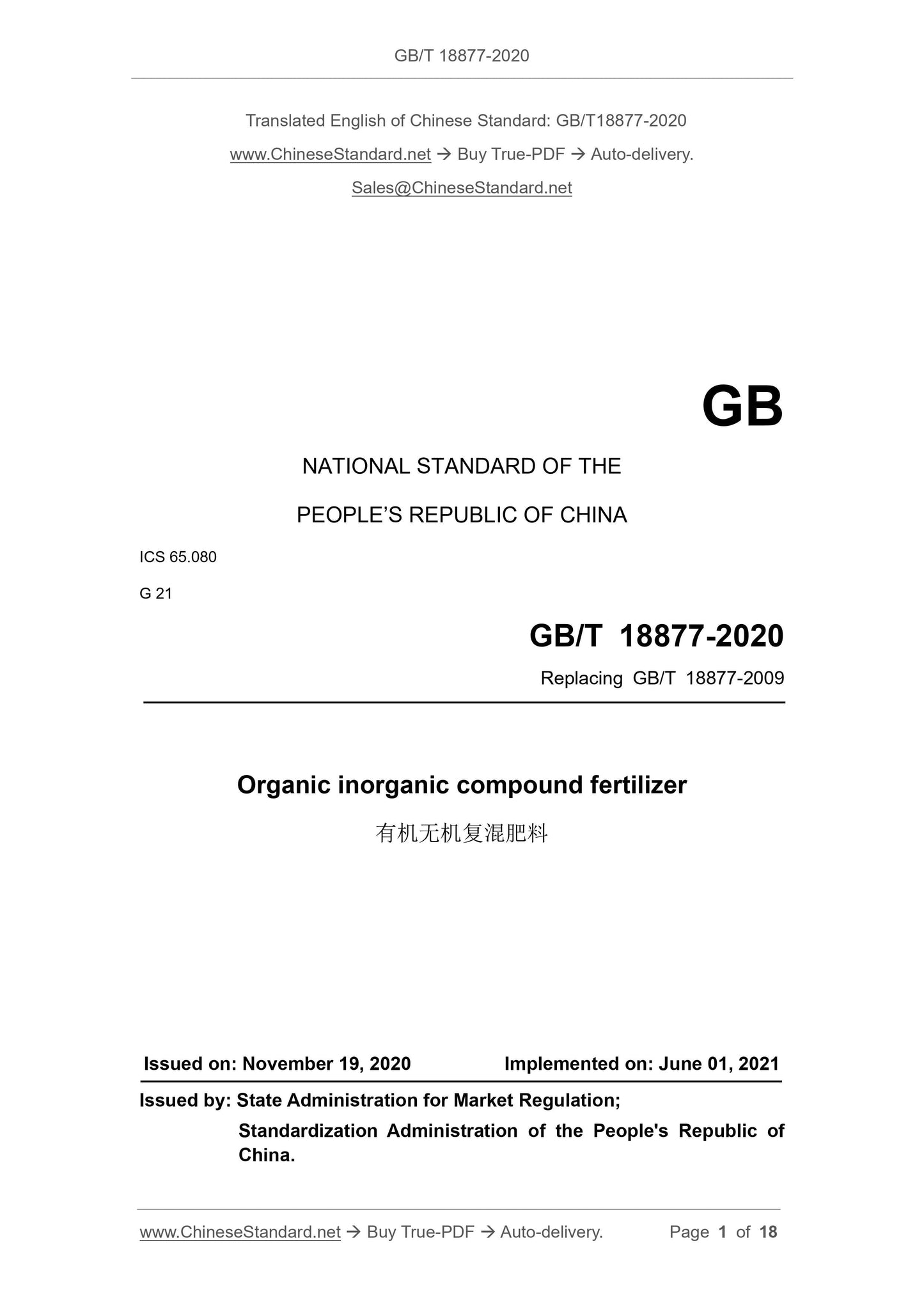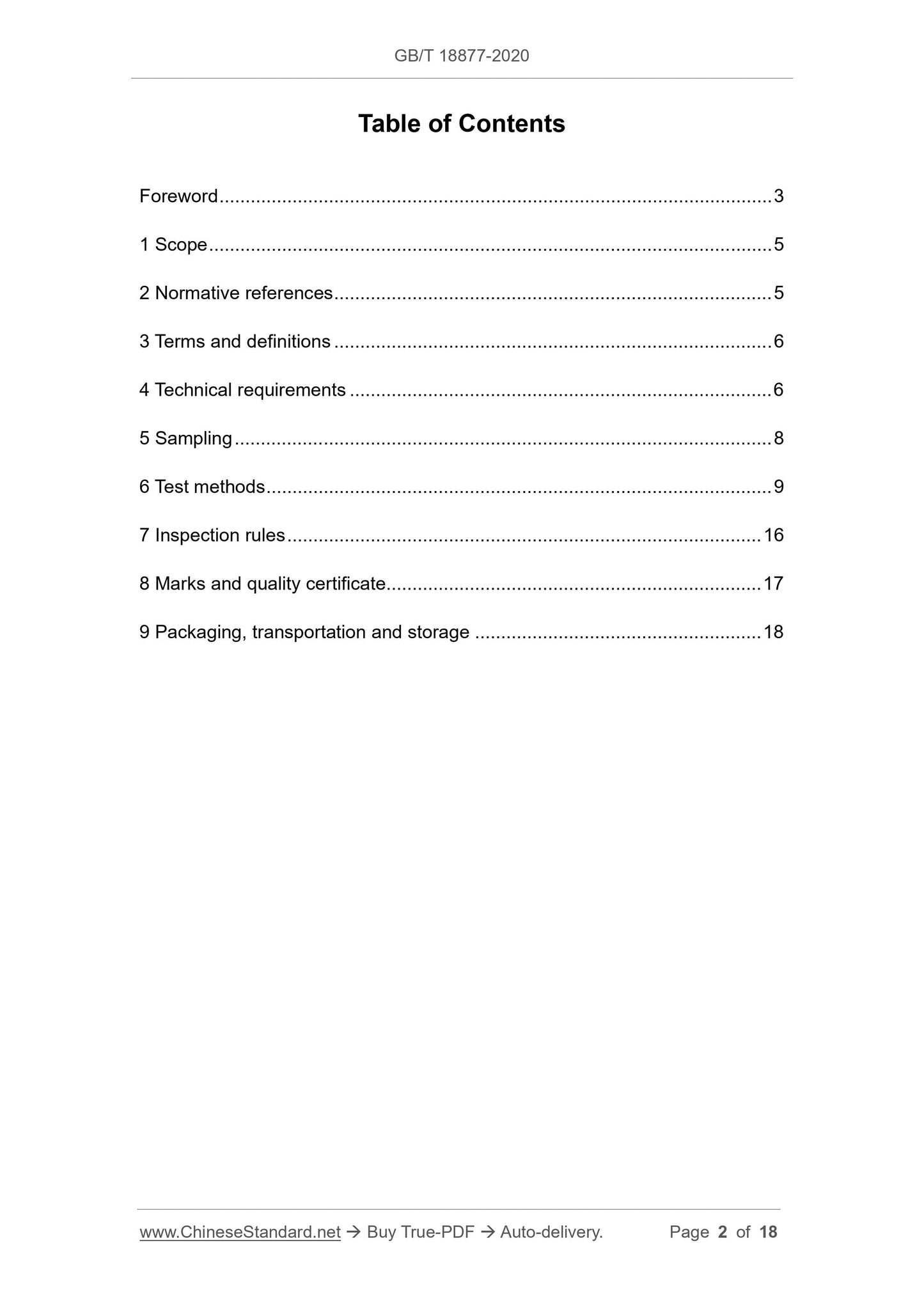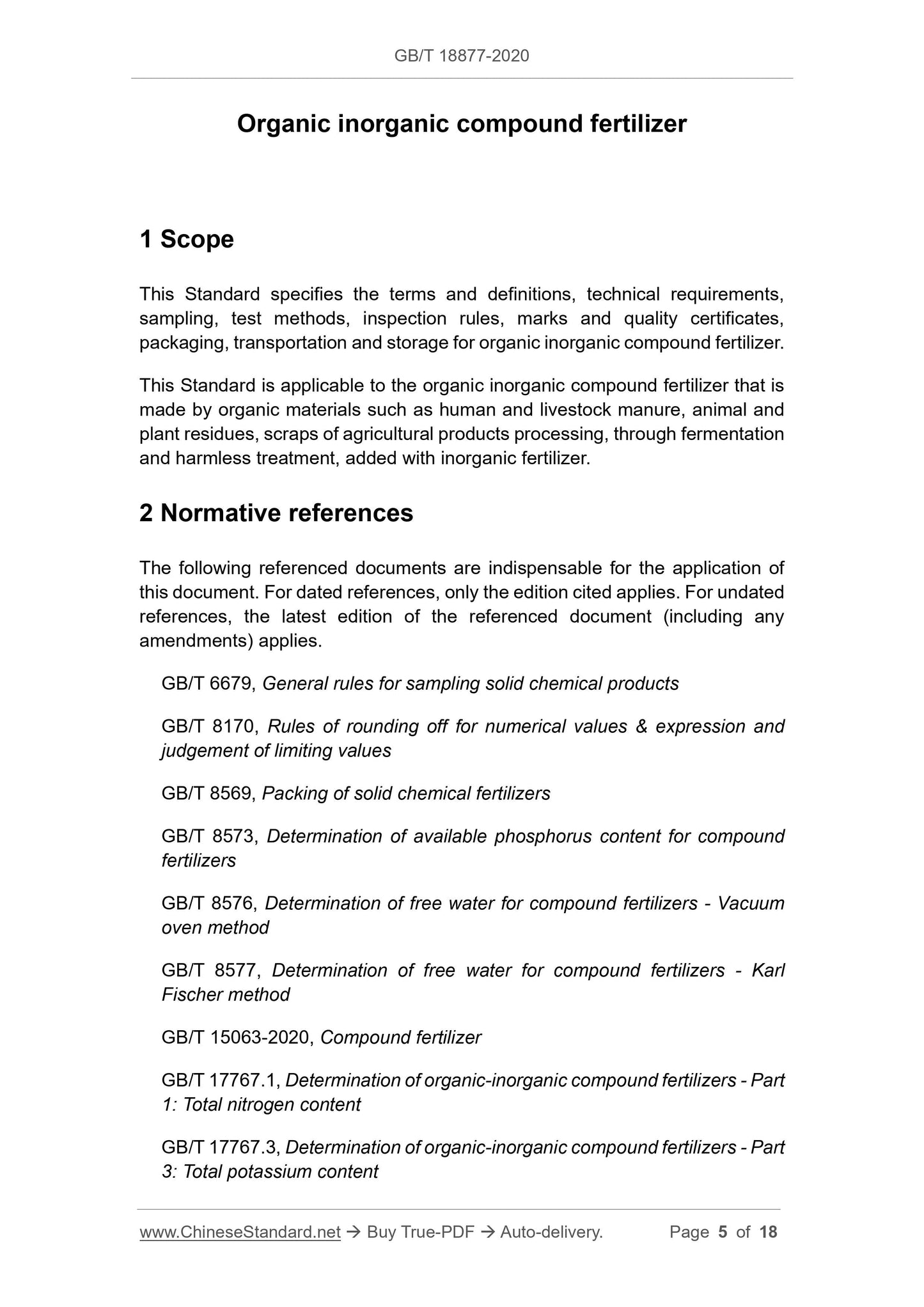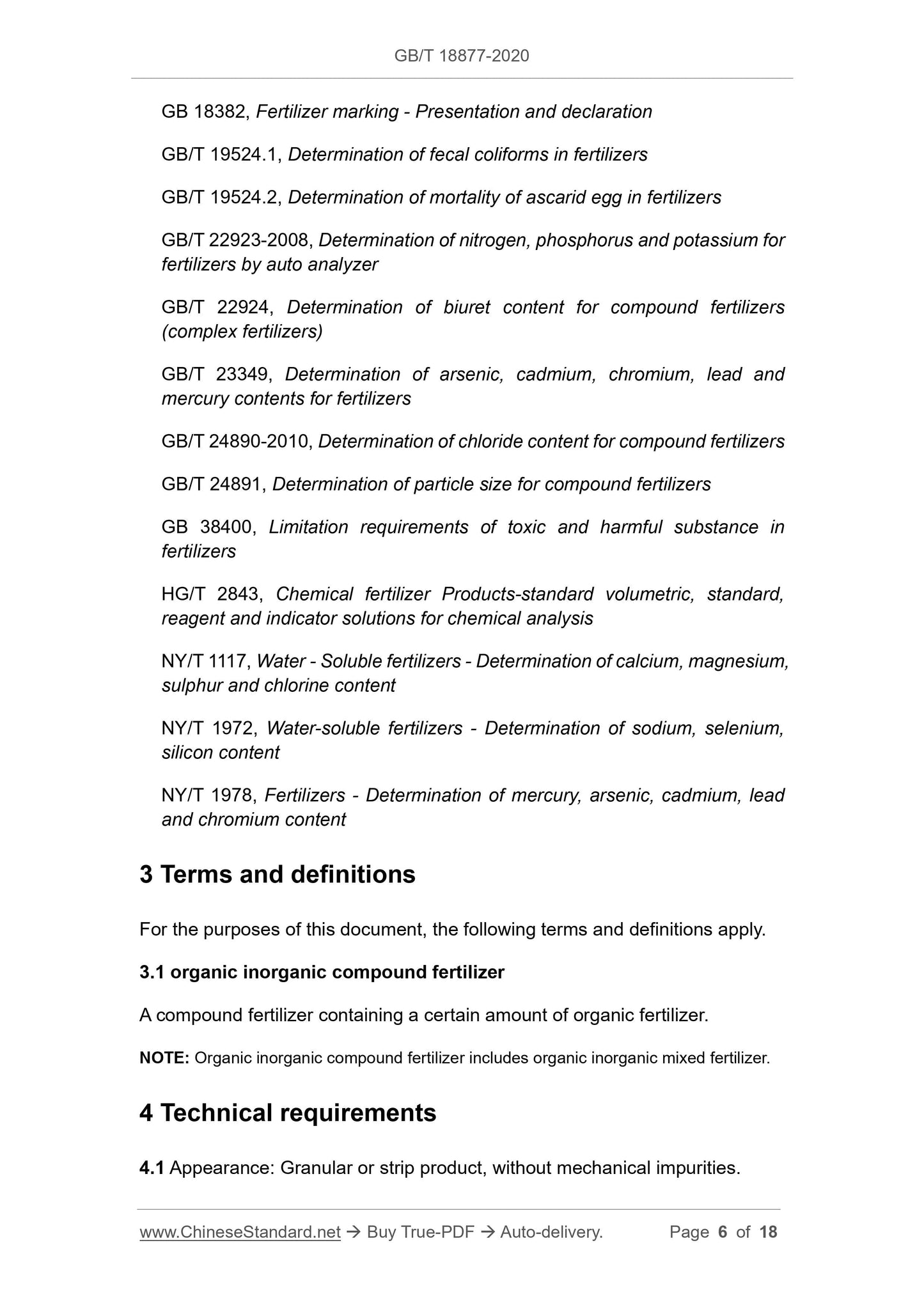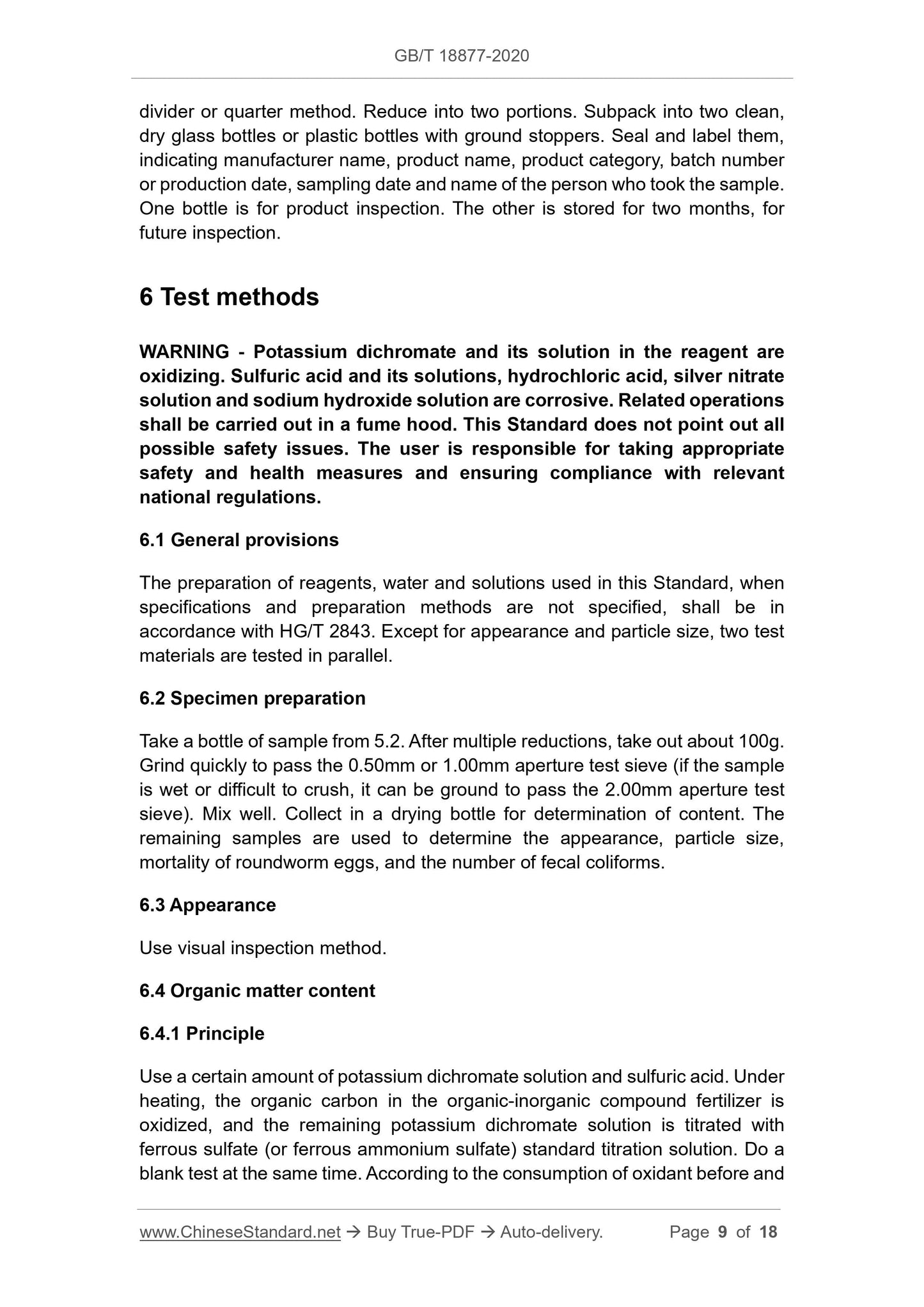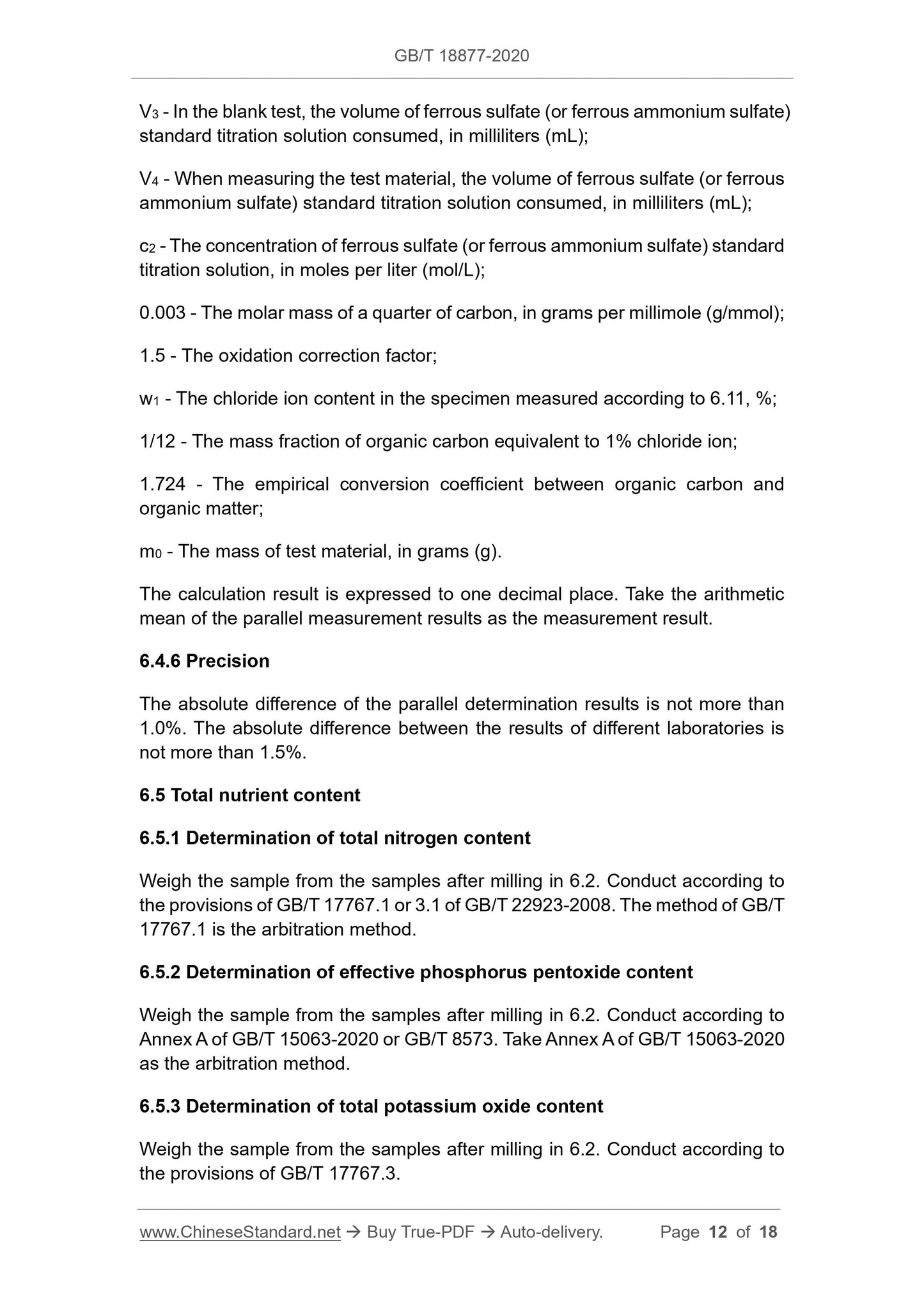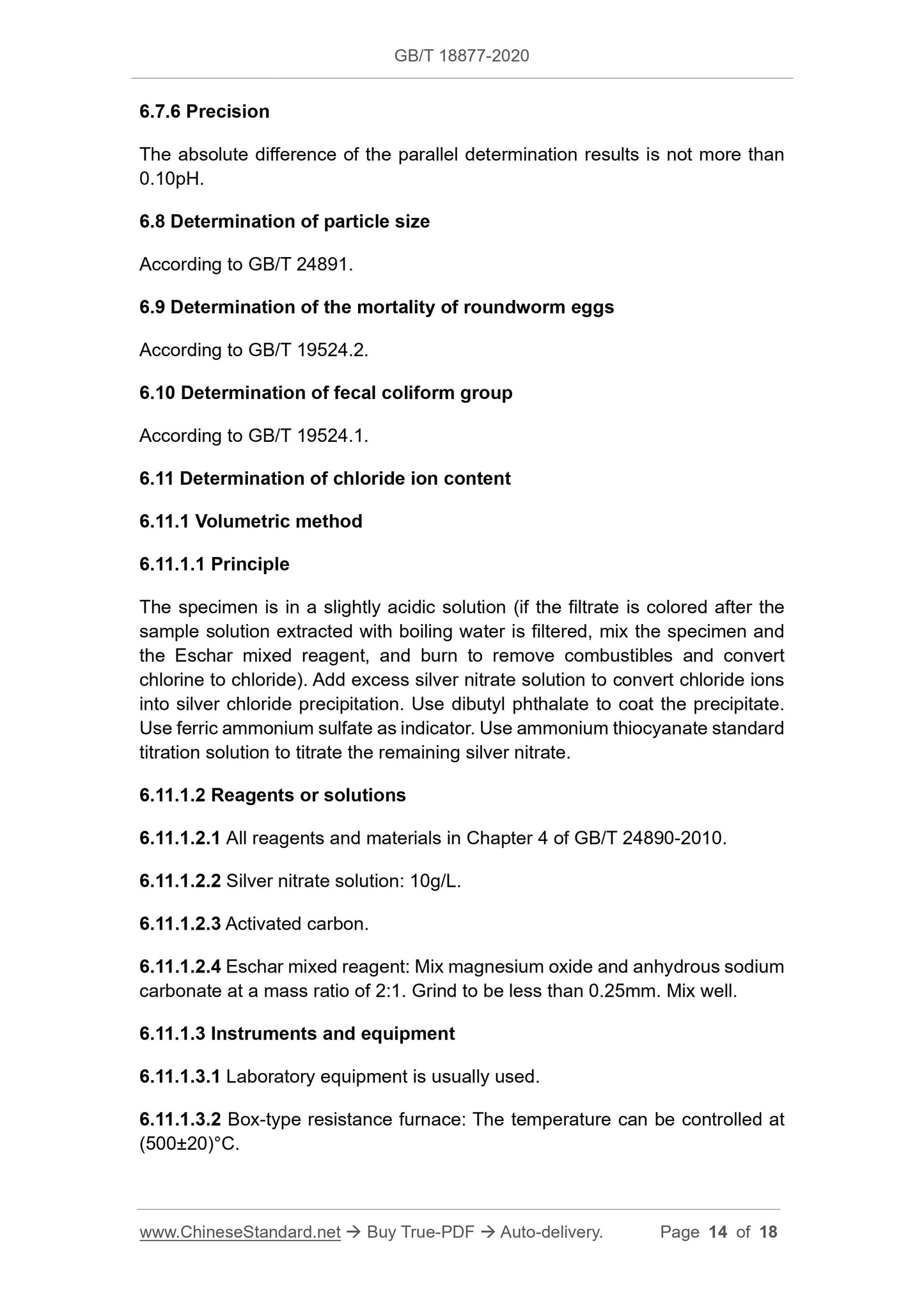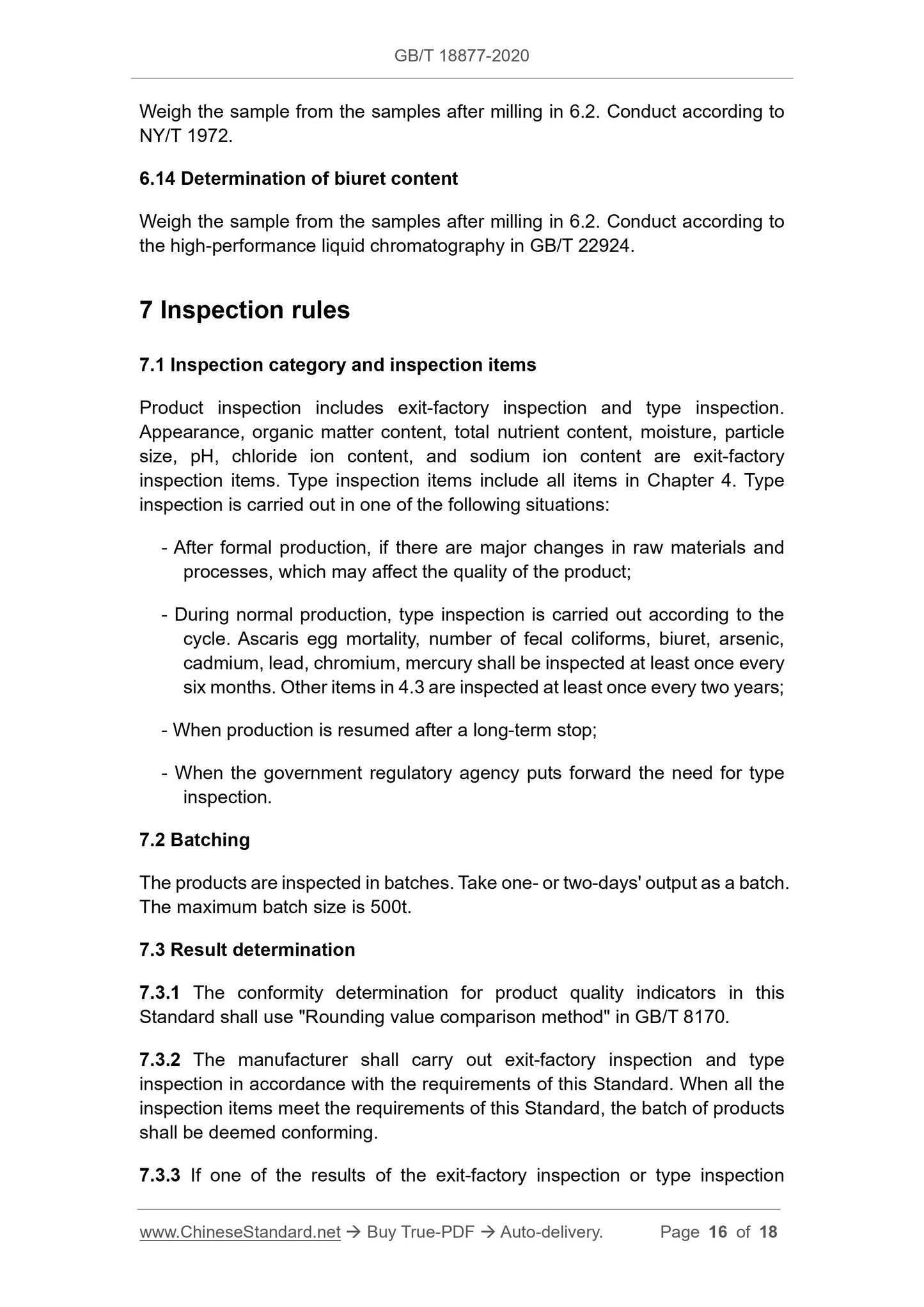1
/
of
8
www.ChineseStandard.us -- Field Test Asia Pte. Ltd.
GB/T 18877-2020 English PDF (GB/T18877-2020)
GB/T 18877-2020 English PDF (GB/T18877-2020)
Regular price
$195.00
Regular price
Sale price
$195.00
Unit price
/
per
Shipping calculated at checkout.
Couldn't load pickup availability
GB/T 18877-2020: Organic inorganic compound fertilizer
Delivery: 9 seconds. Download (and Email) true-PDF + Invoice.Get Quotation: Click GB/T 18877-2020 (Self-service in 1-minute)
Newer / historical versions: GB/T 18877-2020
Preview True-PDF
Scope
This Standard specifies the terms and definitions, technical requirements,sampling, test methods, inspection rules, marks and quality certificates,
packaging, transportation and storage for organic inorganic compound fertilizer.
This Standard is applicable to the organic inorganic compound fertilizer that is
made by organic materials such as human and livestock manure, animal and
plant residues, scraps of agricultural products processing, through fermentation
and harmless treatment, added with inorganic fertilizer.
Basic Data
| Standard ID | GB/T 18877-2020 (GB/T18877-2020) |
| Description (Translated English) | Organic inorganic compound fertilizer |
| Sector / Industry | National Standard (Recommended) |
| Classification of Chinese Standard | G21 |
| Classification of International Standard | 65.080 |
| Word Count Estimation | 11,15 |
| Date of Issue | 2020-11-19 |
| Date of Implementation | 2021-06-01 |
| Older Standard (superseded by this standard) | GB/T 18877-2009 |
| Regulation (derived from) | National Standard Announcement No. 26 of 2020 |
| Issuing agency(ies) | State Administration for Market Regulation, China National Standardization Administration |
Share
